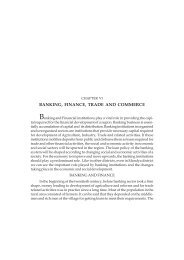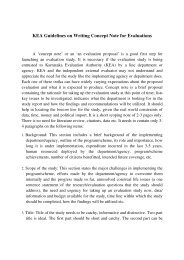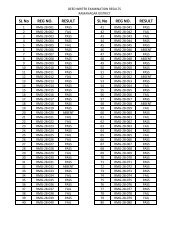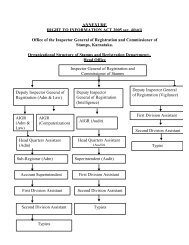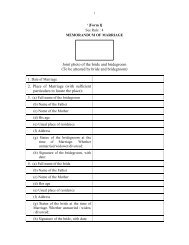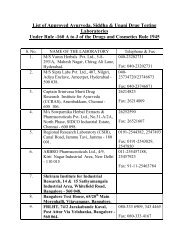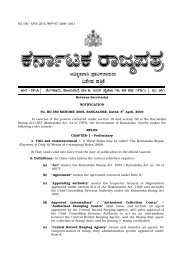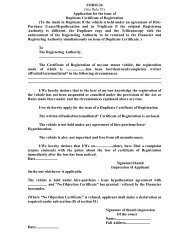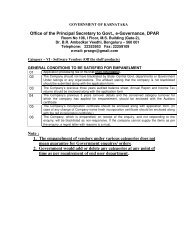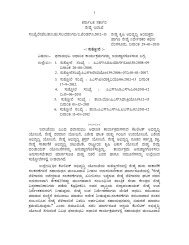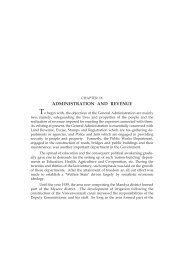Chapter XIII CULTURE - Government of Karnataka
Chapter XIII CULTURE - Government of Karnataka
Chapter XIII CULTURE - Government of Karnataka
You also want an ePaper? Increase the reach of your titles
YUMPU automatically turns print PDFs into web optimized ePapers that Google loves.
Culture 479<br />
‘Kumararamana Kathe’ proved its multi-dimensional application. But it was<br />
Rathnakaravarni who, in his ‘Bharathesha Vaibhava’, has explored its full<br />
potential.<br />
The Wodeyars <strong>of</strong> Mysore gave a boost to Kannada literature. Particularly<br />
noteworthy is Chikkadevaraja Wodeyar’s period from 1672 to 1704. He himself<br />
wrote ‘Chikkadevaraja Binnapa’. Tirumalaraya’s ‘Chikkadevaraja Vijaya’ has<br />
Mysore history as its theme and is in Champu style. Singararya’s ‘Mitra vinda<br />
Govinda’, translated from Harsha’s ‘Rathnavali’ is considered to be the earliest<br />
Kannada play. Another noteworthy poetess <strong>of</strong> this period is Sanchi Honnamma<br />
who wrote “Hadibadeya Dharma’ in Sangatya metre.<br />
Mummadi Krishnaraja Wodeyar continued the tradition <strong>of</strong> his predecessor.<br />
Kempunarayana’s ‘Mudramanjusha’ deserves a special mention. Wodeyar’s also<br />
started the Raja’s English School (1833) and this along with the expansion <strong>of</strong><br />
Missionary activities, increased the Western influence on Kannada literature.<br />
Chamaraja Wodeyar’s period saw a new era in Kannada literature.<br />
M.S.Puttanna’s ‘Madiddunno Maharaya’, D.Venkatachalayya and<br />
Dr.B.V.Venkateshaiyya’s detective stories like ‘Parimala’ and ‘Arindamana<br />
Sahasagalu’, Galaganatha’s social and historical novels, Kittel’s dictionary,<br />
Cha.Vasudevaraya’s ‘Bala Bodhe’ belong to this period. Muddanna’s<br />
‘Ramashvamedha’ is an epic episode in prose. This has a tinge <strong>of</strong> modem writing.<br />
Translated Novels by B.Venkatacharya and Galaganatha, mostly historical<br />
made a deep impact on readers.<br />
In 1921, B.M.Srikantayya heralded the ‘Navodaya’ movement. His ‘English<br />
Geethagalu’ was a free rendering <strong>of</strong> some great English poems. Around this<br />
period, and unknown to him, K.V.Puttappa (Kuvempu) had switched over<br />
from English writing to Kannada and the culmination <strong>of</strong> his work was ‘Sri<br />
Ramayana Darshana’ written in blank verse. Puttappa’s social novels such as<br />
‘Kanurusubbamma Heggadati’ and ‘Malegalalli Madumagalu’ are equally well<br />
KV Puttappa’s House (in his younger Days) at Kuppalli near Thirthahalli



